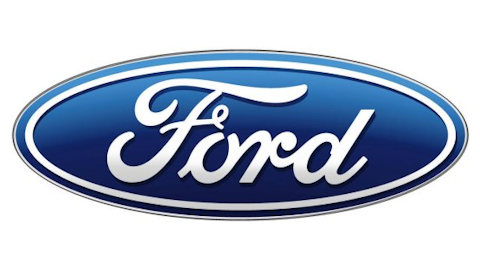Every investor can appreciate a stock that consistently beats the Street without getting ahead of its fundamentals and risking a meltdown. The best stocks offer sustainable market-beating gains, with improving financial metrics that support strong price growth. Let’s take a look at what Ship Finance International Limited (NYSE:SFL)‘s recent results tell us about its potential for future gains.
What the numbers tell you
The graphs you’re about to see tell Ship Finance’s story, and we’ll be grading the quality of that story in several ways.
Growth is important on both top and bottom lines, and an improving profit margin is a great sign that a company’s become more efficient over time. Since profits may not always reported at a steady rate, we’ll also look at how much Ship Finance’s free cash flow has grown in comparison to its net income.
A company that generates more earnings per share over time, regardless of the number of shares outstanding, is heading in the right direction. If Ship Finance’s share price has kept pace with its earnings growth, that’s another good sign that its stock can move higher.
Is Ship Finance managing its resources well? A company’s return on equity should be improving, and its debt to equity ratio declining, if it’s to earn our approval.
Healthy dividends are always welcome, so we’ll also make sure that Ship Finance’s dividend payouts are increasing, but at a level that can be sustained by its free cash flow.
By the numbers
Now, let’s take a look at Ship Finance’s key statistics:

SFL Total Return Price data by YCharts.
| Passing Criteria | 3-Year* Change | Grade |
|---|---|---|
| Revenue growth > 30% | (13.2%) | Fail |
| Improving profit margin | 9.9% | Pass |
| Free cash flow growth > Net income growth | (65.4%) vs. 23.8% | Fail |
| Improving EPS | 12.8% | Pass |
| Stock growth (+ 15%) < EPS growth | 82.3% vs. 12.8% | Fail |
Sources: YCharts and Yahoo! Finance
*Period begins at end of Q3 2009.

SFL Return on Equity data by YCharts.
| Passing Criteria | 3-Year* Change | Grade |
|---|---|---|
| Improving return on equity | (12.7%) | Fail |
| Declining debt to equity | (37%) | Pass |
| Dividend growth > 25% | 18.2% | Fail |
| Payout ratio < 50% | 74% | Fail |
Sources: YCharts and Yahoo! Finance.
*Period begins at end of Q3 2009.
How we got here and where we’re going
Three out of nine passing grades isn’t a particularly impressive showing, regardless of Ship Finance’s weighty dividend. That dividend is always at risk of being cut, should business deteriorate even modestly, as it currently takes up three quarters of the company’s net income. Despite weakening revenue and free cash flow, Ship Finance’s stock has shot up over the past three years — most likely the result of yield-seekers piling on. Can Ship Finance improve its fundamentals and continue to justify this optimism? Let’s take a look.
In some respects, Ship Finance is already in much better shape than its shipping peers. The collapse of the highly watched Baltic Dry Index hasn’t had anywhere near the impact on Ship Finance as it’s had elsewhere, because Ship Finance has historically focused on crude oil transport. In fact, Ship Finance began as an oil-focused shipping spinoff from Frontline Ltd. (NYSE:FRO) , which sold it most of its original fleet.
Today, Ship Finance has diversified into container ships, offshore drilling rigs (including deepwater rigs), and even dry bulk. Frontline still charters many of Ship Finance’s owned ships, including all of its Very Large Crude Carriers, but the company also has a number of rigs chartered to Deep Sea Supply and Seadrill Ltd (NYSE:SDRL) , which are both controlled to some extent by John Fredriksen. Ship Finance is thus one of several arms of Fredriksen’s shipping empire, and it is tightly bound to his success in the industry. That’s a great thing if you believe in Fredriksen’s capabilities as a shipping magnate, but it also poses a real risk should any of his other properties take a turn for the worse.
Ship Finance may be reducing its debt-to-equity ratio, but it still remains high relative to some other peers. While Frontline’s debt-to-equity level is abnormally high for an industry that often maintains high debt levels, Ship Finance still boasts a higher level of debt to equity than SeaDrill, and its debt-to-equity is twice as high as DryShips Inc. (NASDAQ:DRYS)‘ , and over five times as high as Diana Shipping Inc. (NYSE:DSX) . The higher demand for crude oil shipping, and the cost of building out a more diversified fleet, can justify Ship Finance’s higher debt levels. However, investors should be wary of a debt spike similar to what Fredriksen has undertaken at Frontline. Just last week, Ship Finance priced another $250 million in debt while also offering some new shares on the market. The new debt goes toward retiring old debt (which is helpful when the old notes bear higher interest rates), but keep your eye out for any efforts to jack up debt levels in the near future.
Keep track of Ship Finance by adding it to your free stock Watchlist.
The article Is Ship Finance International Destined for Greatness? originally appeared on Fool.com and is written by Alex Planes.
Fool contributor Alex Planes holds no financial position in any company mentioned here. Add him on Google+ or follow him on Twitter, @TMFBiggles, for more news and insights.The Motley Fool recommends and owns shares of Seadrill.
Copyright © 1995 – 2013 The Motley Fool, LLC. All rights reserved. The Motley Fool has a disclosure policy.



